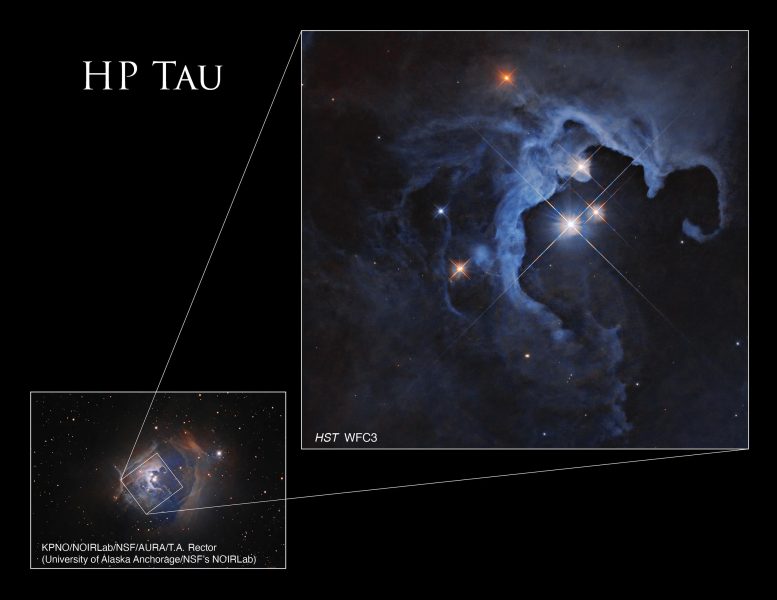
NASA’s Hubble Space Telescope image captures a triple star system. Image source: NASA, ESA, G. Duchene (Universite de Grenoble I); Image processing: Gladys Cooper (NASA/The Catholic University of America)
NASA‘s Hubble Space Telescope This stunning image of three stars, including the variable star HP Tau, was captured in a reflection nebula. Young T Tauri stars, which have not yet undergone nuclear fusion, are still surrounded by the remnants of the clouds of dust and gas from which they formed, shedding light on the early stages of star formation and the evolution of the planetary disk.
Resembling a shimmering cosmic geode, a stunning trio of stars glows from the hollow cavity of a reflection nebula in this new image captured by NASA’s Hubble Space Telescope. This triple star system consists of the variable stars HP Tau, HP Tau G2, and HP Tau G3. HP Tau is known as a T Tauri star, a type of young variable star that has not yet begun nuclear fusion but is beginning to evolve into a hydrogen-fueled star similar to our Sun.
T Tauri stars are typically younger than 10 million years old. In comparison, our Sun is about 4.6 billion years old. They are often found still enveloped in the clouds of dust and gas from which they were formed.

The box in the ground-based image reveals the location of Hubble’s view within the broader context of this triple-star system. Image source: NASA, ESA, G. Duchene (Universite de Grenoble I); Image processing: Gladys Cooper (NASA/The Catholic University of America); Inset image: KPNO/NOIRLab/NSF/AURA/TA Rector (University of Alaska Anchorage/NSF NOIRLab)
As with all variable stars, the brightness of HP Tau changes with time. T Tauri stars are known to have periodic and random fluctuations in brightness. Random variations may be due to the chaotic nature of the young, developing star, such as instabilities in the accreting disk of dust and gas around the star, material from this disk falling onto the star and being consumed, and flares on the star’s surface. The periodic changes may be due to giant sunspots rotating in and out of view.
A cloud of gas and dust surrounds the stars, sparkling with reflected light. Reflection nebulae do not emit visible light on their own, but they shine when light from nearby stars bounces off gas and dust, like fog illuminated by the glow of car headlights.
HP Tau is located about 550 light-years away in the constellation Taurus. Hubble studied HP Tau as part of an investigation into protoplanetary disks, disks of material surrounding stars that coalesce to form planets over millions of years.




More Stories
Boeing May Not Be Able to Operate Starliner Before Space Station Is Destroyed
Prehistoric sea cow eaten by crocodile and shark, fossils say
UNC student to become youngest woman to cross space on Blue Origin